Canon MAXIFY GX7150 review: Refillable, flexible and thoroughly likeable – but it's only good value if you print a lot
This new refillable office inkjet from Canon does it all, and does it well, but the asking price is steep
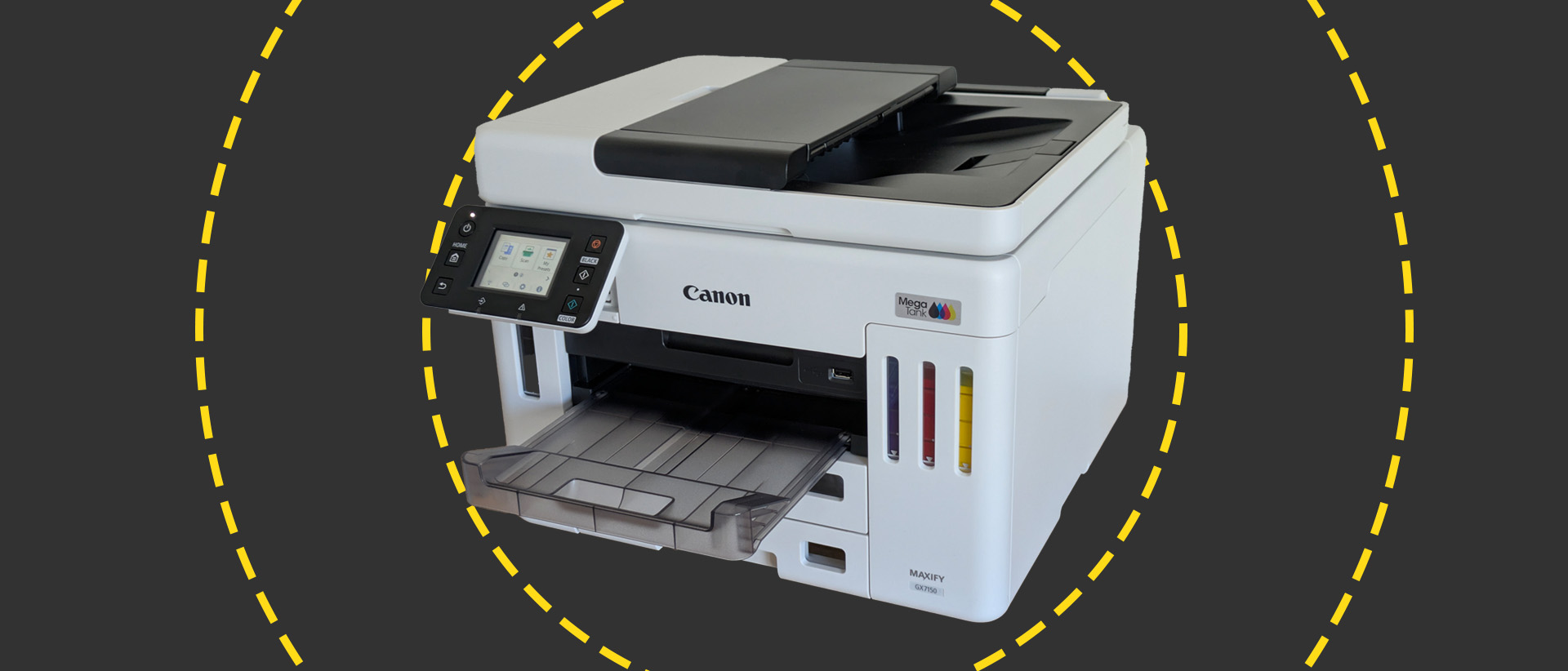
-
+
Great plain paper prints
-
+
Fantastic low running costs
-
+
A good all-rounder
-
-
Expensive to buy
-
-
Color prints a bit slow

Regular readers will know that we do love a refillable inkjet. At a stroke, ink tank printers do away with years of complaints of stingy cartridges and high running costs, replacing wasted plastic and high maintenance requirements with simple, cheap bottles of ink and extended service intervals. Canon's MAXIFY range is geared towards home power users and busy small offices; the Canon MAXIFY GX7150 is its latest range-topping refillable multifunction peripheral (MFP).
The MAXIFY GX7150 is about as fully featured as inkjet MFPs get. It's a four-in-one, combining print, scan, copy, and fax. On top, you'll find an automatic document feeder (ADF) happy to juggle 50 sheets of paper. Behind it, there's a 100-sheet multipurpose paper tray. Look in the base and you'll find dual 250-sheet paper cassettes. Both the printer and ADF support duplex operation, so you can make double-sided prints, scans, copies or faxes, saving paper, reducing hassle, and producing professional-looking results.
You can connect this printer via USB, wired Ethernet, or Wi-Fi, although the latter only supports the 2.4GHz band. Everything is controlled by the 2.7" (6.9cm) tiltable color touchscreen and a smattering of dedicated buttons. The only omissions are a USB host port for walkup scans and prints, and the lack of SME-grade options such as extended trays, staplers, or NFC readers.
We're sure you're familiar with the refillable inkjet concept by now, but it's always worth explaining the specifics. The GX7150 may have a fearsome-looking price tag, but it arrives with enough bundled ink to print around 6,000 black or 14,000 color pages. Dividing its purchase price by 6,000 gives you a cost per full-color page of around 7.3p (8.8p), which is on a par with the running costs of competing cartridge-based inkjets – and at that point you'd still have enough color ink left for around 8,000 further pages. That's good, but when the supplied ink runs dry, ongoing refills work out at just 0.2p per black page, and 0.4p in color – a tenth or less the cost of running a conventional inkjet.
Because you're paying more up front for the promise of lower overall costs over time, it's important to be sure you're likely to print at least as far as the included ink will take you. For this reason, we always prefer refillable printers to offer a decent warranty period. The MAXIFY GX7150 comes with three years, giving plenty of time to print thousands of pages and be up on the deal overall.
Canon MAXIFY GX7150: Set up
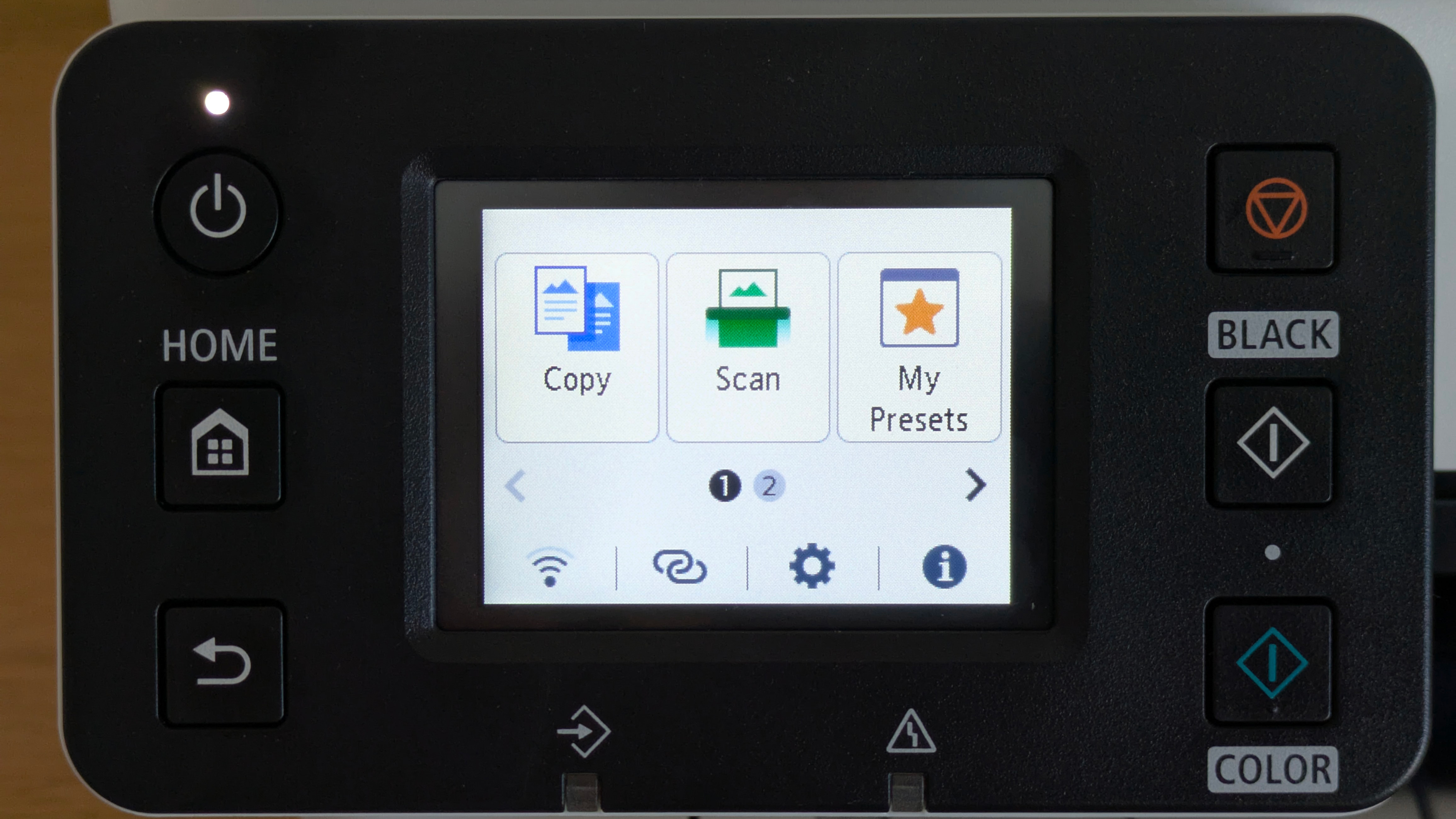
The Canon MAXIFY GX7150 is on the big side for an inkjet, but it's within most people's safe lifting range. Its two paper cassettes are useful, offering the flexibility of storing either plain and headed paper, or just a whole ream of plain paper, but neither of them accepts photo paper. If you're likely to use that or other special media, it's best to keep it nearby and load it into the rear feed when needed.
This MFP arrives with its print heads fitted, so setting it up is just a case of removing some tape and filling up the tanks. This had already been done on our review sample, but our previous experience with refillable MAXIFY devices has been straightforward. Each bottle has a different opening to prevent you fitting it to the wrong tank; you simply invert the bottle and push it gently onto the spigot, then wait while gravity empties it into the tank.
Sign up today and you will receive a free copy of our Future Focus 2025 report - the leading guidance on AI, cybersecurity and other IT challenges as per 700+ senior executives
It's worth noting that most inkjet printers, and especially refillable ones, must prime themselves with ink before you first use them. Again, we didn't need to go through that with our pre-used example, but it usually takes up to 10 minutes. It can be a frustrating process, as most printers don't let you join a wireless network while it's ongoing, meaning you can't get on with installing PC or mobile software.
Other than that, setting up the MAXIFY GX7150 is free of frustrations. Canon's mobile software is simple enough to use, and covers the main print and scan features you're likely to want. The full PC driver suite includes a TWAIN scan interface that offers a great balance of usability and features.
Canon MAXIFY GX7150: Printing, scanning, and copying
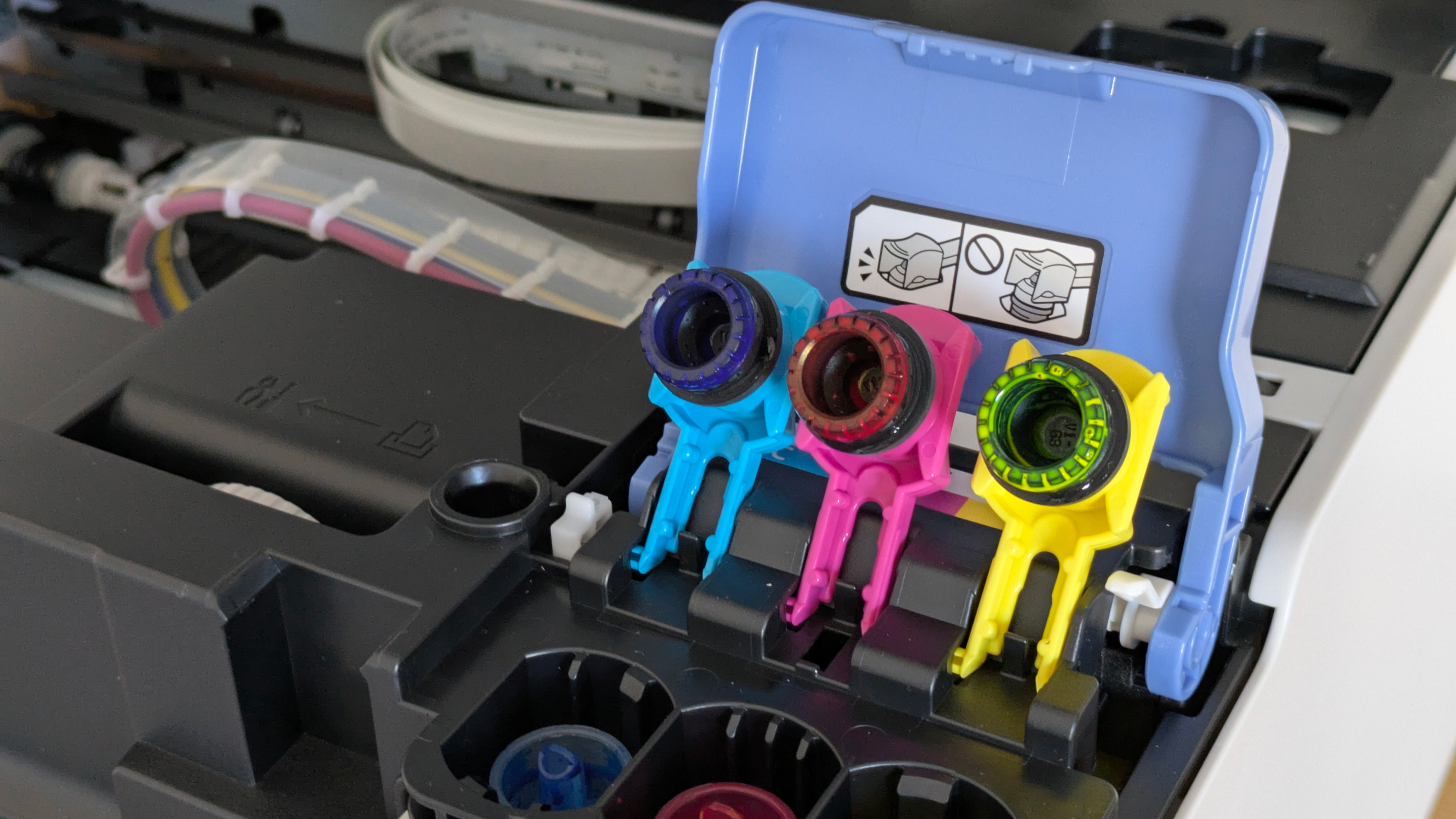
Start using the MAXIFY GX7150, and it soon becomes obvious that it's a solid performer, particularly when printing with black ink. It's rapid when printing text, needing 13 seconds to produce a first page, then hitting 20.8 pages per minute (ppm) on our 25-page mono letter test. Switching to Economy print quality was no faster, but it didn't result in obviously inferior text quality – worth noting, as Canon says you'll get 50% more pages from your ink that way.
We were less impressed with its color print speeds. Our test document is a challenging, graphics-rich collection of presentation slides, and web and magazine pages, but given the GX7150's fast text prints, its 5.7ppm here was a little underwhelming. We test duplex printing by repeating the first 10 pages of this document, again in color. The GX7150 paused mid-job for some housekeeping – likely to be a bit of ink priming or head cleaning – resulting in an unimpressive 3.1 images per minute (ipm) performance.
This isn't a photo printer, and it doesn't support borderless printing, even on 6x4" (15x10cm) photo paper. Its pigment inks aren't ideal for glossy photo papers, on which they dry to a semi-gloss finish rather than a fully glossy shine. Still, it was quite quick here, managing two 10x8" (25x20cm) prints in three and a half minutes, and needing little more than five minutes for six postcard-sized prints.
Our photocopy tests underlined the difference in speed between black and color work. The MAXIFY GX7150 could copy an A4 page in black in just 11 seconds. Using the ADF it copied 10 pages in 52 seconds. Switching to color, the same tests took 14 seconds and 101 seconds, respectively – the latter twice as slow. This printer can make duplex copies, with its impressive ADF capturing both sides of a double-sided original in a single pass, rather than mechanically flipping the page over. Even so, 20-sided (10-page) color copy needed seven minutes – we've seen much faster results than this.
Happily, network scan speeds were good. This MFP completed a preview scan in seven seconds, and could capture an A4 document at 150 dots per inch (dpi) in 13 seconds. The same job took 21 seconds at a middling 300dpi resolution. Capturing a 6x4" photo at 600dpi also took 21 seconds. Typically, switching to the maximum 1,200dpi – four times as much detail – was much slower, completing in a minute and 46 seconds.
The Canon MAXIFY GX7150's color touchscreen makes its direct functions easy to control, for the most part. We're not sure why there isn't a single menu option for duplex photocopying; instead, you have to separately select duplex scanning and duplex printing. The screen provides helpful information, such as the number of pages left to print during a multi-page job. This indication is for pages, not sides, however, so duplex jobs have further to go than you might at first realize.
During our duplex copy test, the first tray ran out of paper. The GX7150 seamlessly switched to tray two mid-job. Not only that, it allowed us to refill the first tray, all without interrupting the ongoing printing. This MFP doesn't support multitasking, though; for example, we couldn't start a scan job while the printer was busy on another task.
This MFP isn't tailored towards creative uses like photo printing and scanning, but it's not a bad performer. We mentioned photo prints' semi-gloss finish and white borders; they were otherwise fine for occasional use. Photo scans, on the other hand, were excellent, with exemplary color accuracy and extremely impressive focus – at 100% zoom we could make out individual dots in scanned inkjet photos.
The Canon MAXIFY GX7150 is tailored for office use, however, and here it really delivers the goods. Text prints were as sharp and dark as you'll get from an inkjet, while color graphics were excellent. While many inkjets use less ink when duplexing to avoid smears and bleed-through, the GX7150 seems to favor longer drying pauses. Our timed tests confirm that that's a slower approach, but the exceptional quality of our duplex prints showed the value of it.
While photocopies were perhaps half a stop darker than ideal, losing a little detail from dark regions of the page, they were better than average in black or color. Finally, the scanner faithfully captured office documents, producing legible text and reproducing images well.
Canon MAXIFY GX7150: Is it worth it?
We'd forgive you for baulking at the steep asking price for this MFP. It's a lot of money, and frankly, not worth it if you're unlikely to print more than a few hundred pages a year. However, if you'll get through the bundled ink – and particularly if you expect to print much more – the Canon MAXIFY GX7150 should prove exceptional value, with ongoing running costs of well under a penny per page. Add in the protection of a three-year warranty, and you can be confident you'll probably have time to recoup the investment.
Happily, it's not all about running costs. This is a versatile printer covering everything a small office needs. It's well featured and well up to the demands of several users doing a variety of work. The GX7150 perhaps isn't ideal as the bedrock of a creative agency, regularly printing on glossy paper, but for plain paper and general office work, it's ideal.
Canon MAXIFY GX7150 specifications
Technology | Color inkjet MFP | Row 0 - Cell 2 |
Maximum print resolution | 4,800x1,200dpi | Row 1 - Cell 2 |
Dimensions (HWD) | 314x399x410mm | Row 2 - Cell 2 |
Weight | 13.1kg | Row 3 - Cell 2 |
Maximum paper size | A4/legal | Row 4 - Cell 2 |
Warranty | Three years RTB | Row 5 - Cell 2 |
After a brief career in corporate IT, Simon Handby combined his love of technology and writing when he made the move to Computer Shopper magazine. As a technology reviewer he's since tested everything from routers and switches, to smart air fryers and doorbells, and covered technology such as EVs, TVs, solar power and the singularity.
During more than 15 years as Shopper's long-time printer reviewer, Simon tried, tested and wrote up literally hundreds of home, small office and workgroup printers. He continues reviewing smart products and printers for a variety of publications, and has been an IT Pro contributor since 2010. Simon is almost never happier than when surrounded by printers and paper, applying his stopwatch and a seasoned eye to find the best performing, best value products for business users.
-
 ‘1 engineer, 1 month, 1 million lines of code’: Microsoft wants to replace C and C++ code with Rust by 2030 – but a senior engineer insists the company has no plans on using AI to rewrite Windows source code
‘1 engineer, 1 month, 1 million lines of code’: Microsoft wants to replace C and C++ code with Rust by 2030 – but a senior engineer insists the company has no plans on using AI to rewrite Windows source codeNews Windows won’t be rewritten in Rust using AI, according to a senior Microsoft engineer, but the company still has bold plans for embracing the popular programming language
By Ross Kelly Published
-
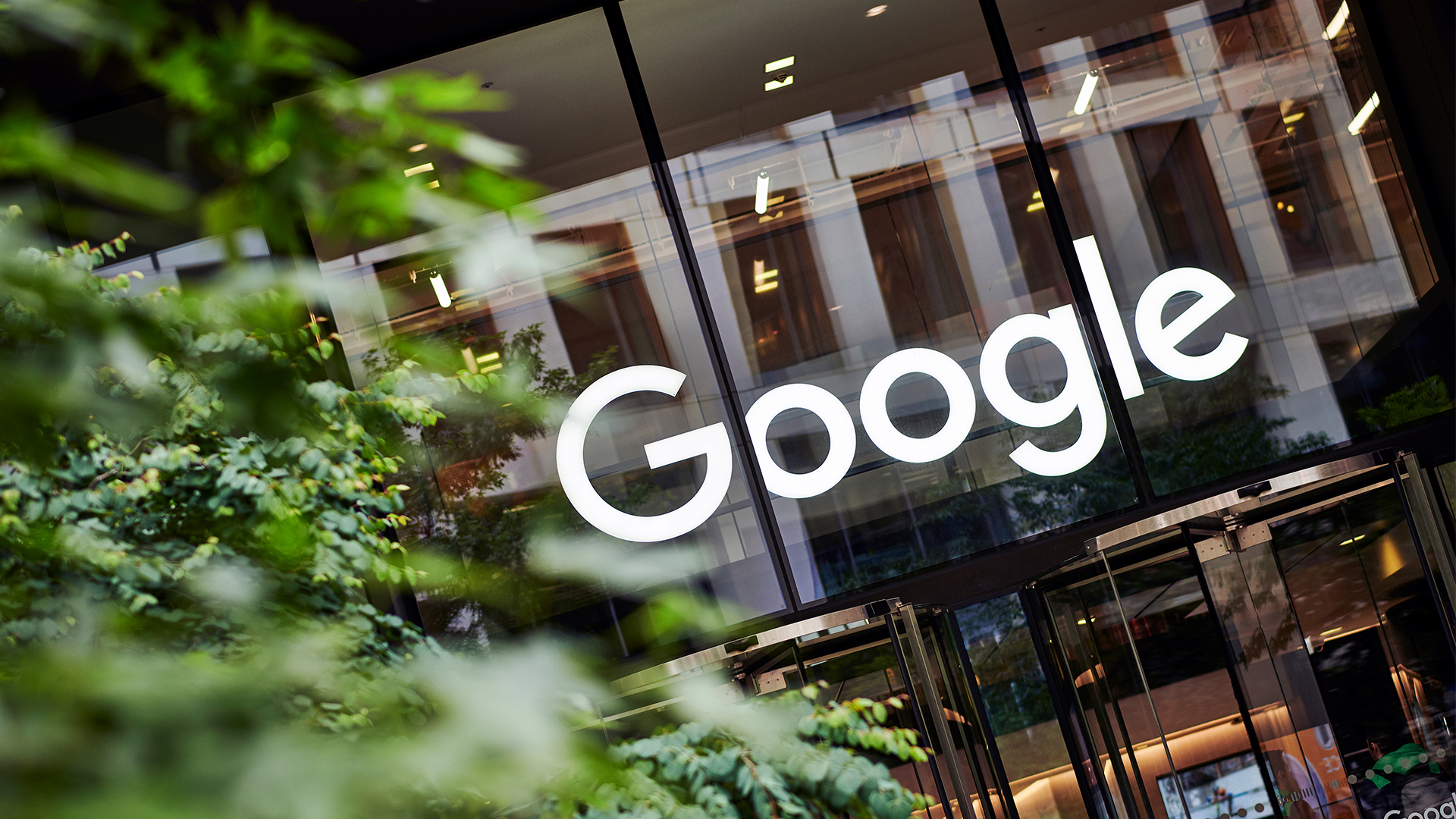 Google drops $4.75bn on data center and energy firm Intersect
Google drops $4.75bn on data center and energy firm IntersectNews The investment marks the latest move from Google to boost its infrastructure sustainability credentials
By Nicole Kobie Published
-
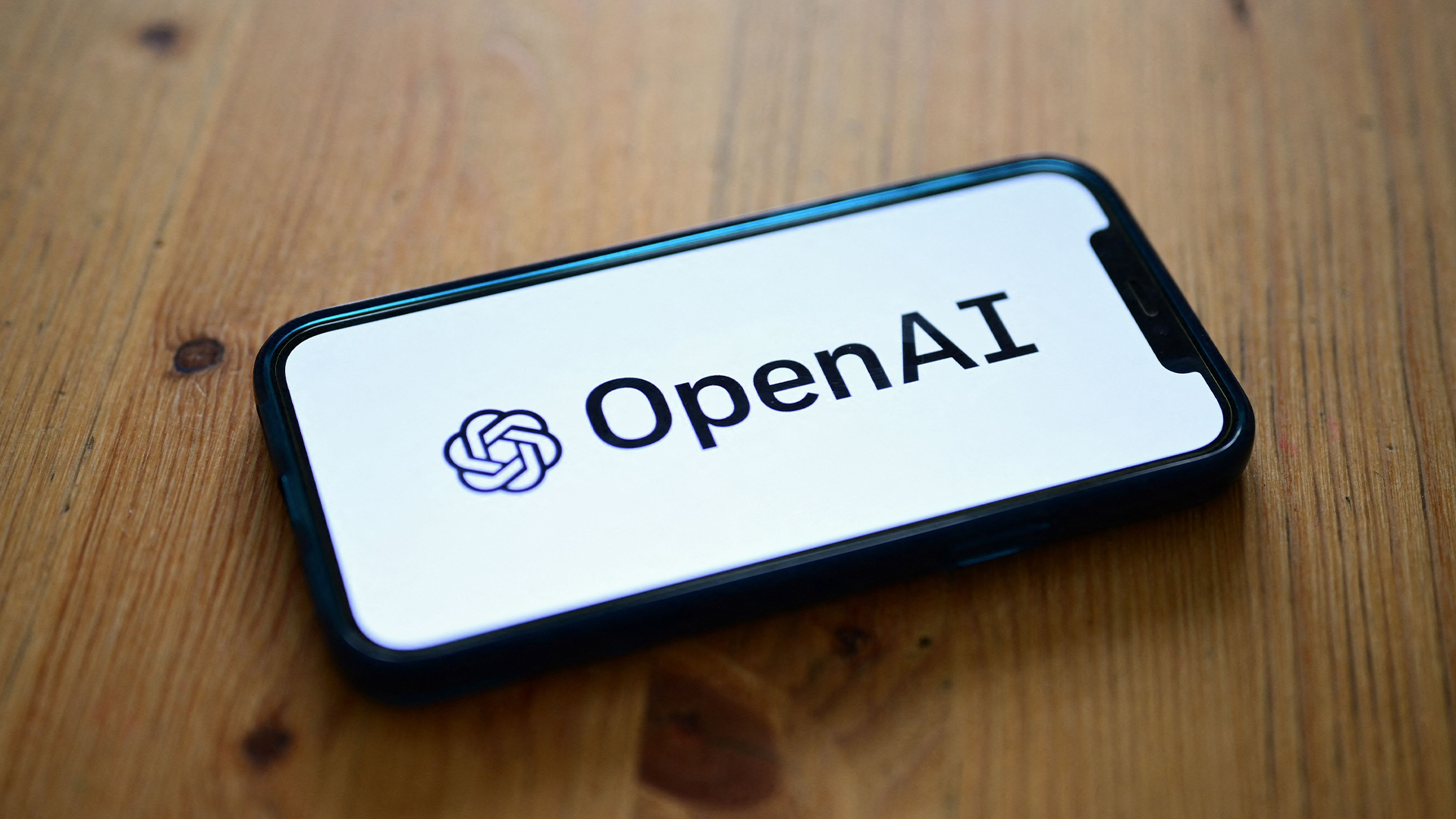 OpenAI says prompt injection attacks are a serious threat for AI browsers – and it’s a problem that’s ‘unlikely to ever be fully solved'
OpenAI says prompt injection attacks are a serious threat for AI browsers – and it’s a problem that’s ‘unlikely to ever be fully solved'News OpenAI details efforts to protect ChatGPT Atlas against prompt injection attacks
By Nicole Kobie Published
